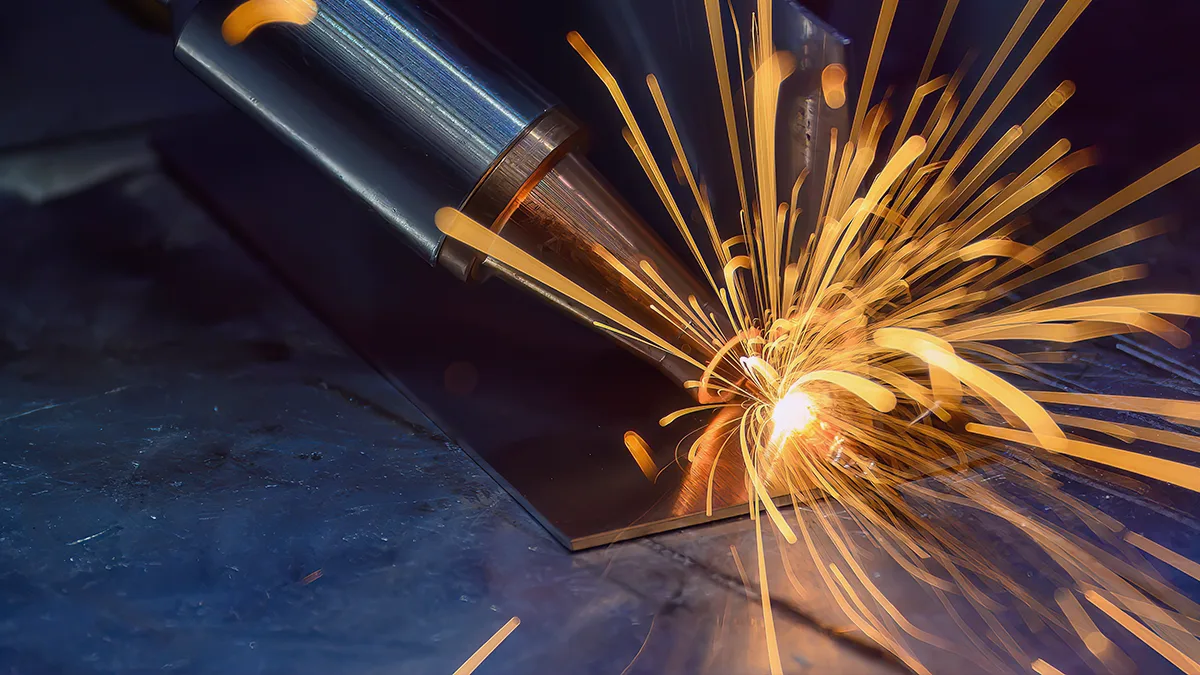Mari4_YARD project results: hand laser welding guide with HoloLens 2

Article based on the report: Technology Evaluation of Augmented and Mixed Reality Systems in Shipbuilding Processes Preliminary Report
The technology was designed for laser welding, a high-energy process requiring precise path, speed, and angle control. While automation is common, recent advances in handheld laser welding demand tools to help “manual” welders maintain accuracy. To address this, HoloLens 2 was tested as a potential solution.
Goal
- to ensure that welders can set up and follow proper speeds, angles and positions using HoloLens2.
Devices and apps
- HoloLens 2 – an advanced, self-contained holographic device designed for enterprise applications, featuring a smart-glasses form factor. It delivers high-resolution, full-color stereoscopic visuals through waveguide and laser technology. The second-generation model introduces enhanced capabilities, including precise eye tracking, sophisticated hand articulation, intelligent semantic labeling, optimizing user interaction and operational efficiency.
- Meta Quest 3 – a virtual and mixed reality headset equipped with depth and position tracking sensors, plus trackable hand controllers. It features front cameras for positional tracking, a color pass-through camera, and a depth sensor for environment awareness. Its camera-based display eliminates the need for extra eye protection.
- Apps: Custom application developed by TT PSC created for hand laser welding training tasks.
Read also: Opinion: Microsoft HoloLens 2 – breakthrough for MR?
How did it go?
The following step-by-step process was performed:
- Area mapping—HoloLens 2 automatically scans the workspace when activated.

- Software activation—the welding application starts after mapping is complete.
- Defining the start point—a virtual marker (small ball) is placed at the designated start position and fine-tuned using hand gestures.

- Defining the endpoint—the same process is repeated to mark the weld’s endpoint.

- Path generation—the software connects the points and establishes a weld axis at the start point.

- Guided movement—the axis moves at a predefined speed, which can be adjusted in the menu.
- Guided welding gun position—application allows configuring angle parallel to the welding path
As the system continues to develop, several refinements would enhance its accuracy, usability, and efficiency. The key areas for improvement include:
- Countdown timer enhancement—maintain the 5-second delay before welding begins for a smoother workflow.
- Clearer weld pool visibility—improve the center axis display to enhance weld pool monitoring.
- Alignment guidance—ensure intuitive tracking by aligning the welding gun with the perpendicular axis.
- Reduce visual lag—investigate and resolve discrepancies between HoloLens 2 and laptop displays for real-time accuracy (streaming only for 3rd party spectators)
- Optimized menu navigation—streamline selection of options for workers, allowing mentors to control key settings like speed and angles.
- 3D scanned welding gun—equip the real gun with markers and introduce a virtual 3D model for alignment verification.
- Visual alignment alerts—display the welding gun model in green when correctly aligned, and turn red if out of tolerance.
These improvements aim to refine the user experience, enhance precision, and support better integration into practical welding applications.

Results
Checked and confirmed:
- user see contextual information,
- performance is faster and more immersive,
- precise localization of objects – AR tracking works.
See how we improved the performance of the welding company:

See also: Mari4_YARD project results: industrial AR in shipbuilding processes
